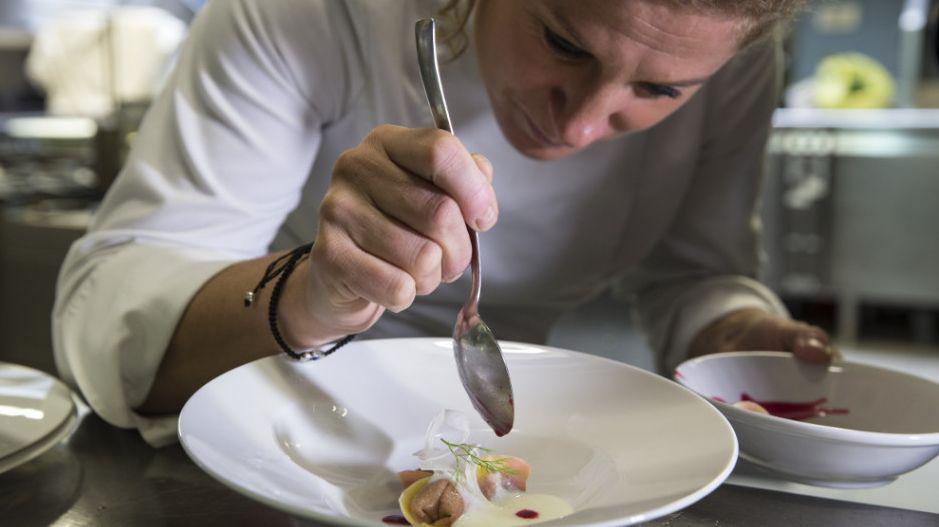

In our area, traditions are still rather strong. In this way, the environment is manifested through cuisine, through food, which is prepared in various ways. During holidays, we pay particular attention to our tradition to keep it alive and preserve it so that our guests can feel that we care about the dishes from old times. The recipe for Kobarid rolled dumplings has only been passed on through oral tradition; no written recipe for their preparation exists. Luckily, our children are taught to make Kobarid rolled dumplings at local schools, while the country women's club is reviving old culinary traditions. On Christmas day, the entire Franko family gathers at our house, while on Christmas Eve, we attend bilingual mass in a church across the border. In recent years, we have been visiting the Landerska cave near Špeter, immediately across the Italian border, where many Slovenians gather on festive evenings. According to local tradition, people treat themselves to tripe after mass. All local inns are open at midnight, serving tripe. Unfortunately, this tradition has not yet been revived in Kobarid, so people from Kobarid cross the border on this day. I think it’s a very nice custom.
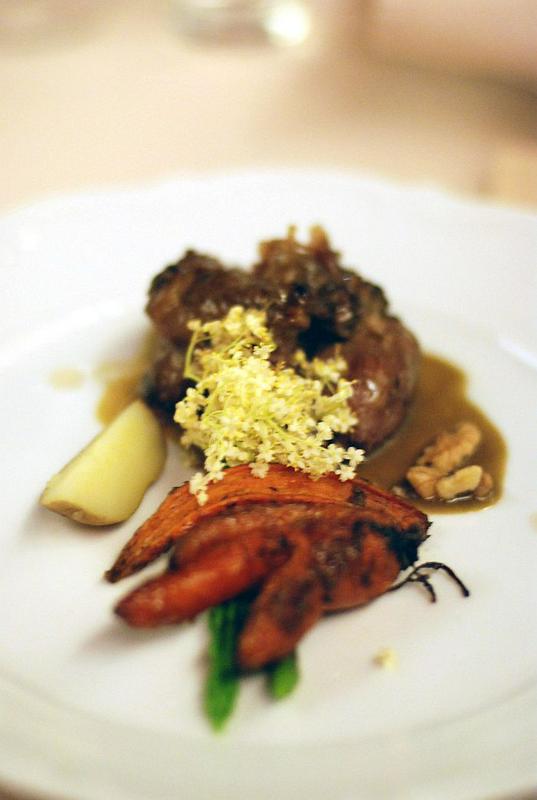
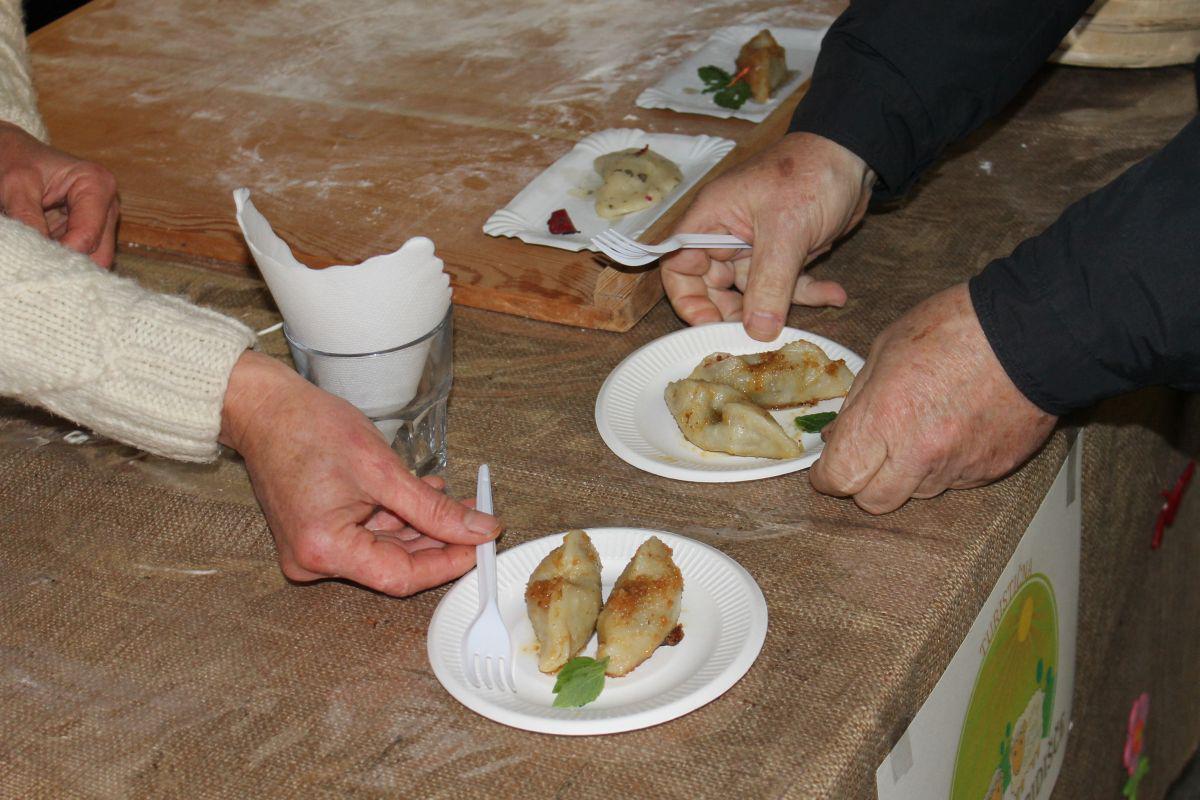
Holidays are meant to unite families, especially nowadays, when time is scarce. We should get together at least during the holidays, and food has always connected people. We are forced to sit together even if we don't get along and disputes are almost always resolved at the table, so food is a good way of bonding people.
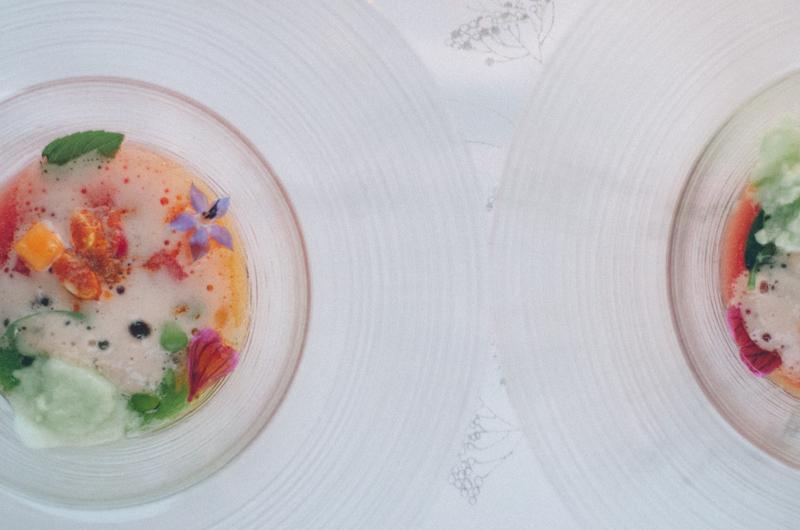
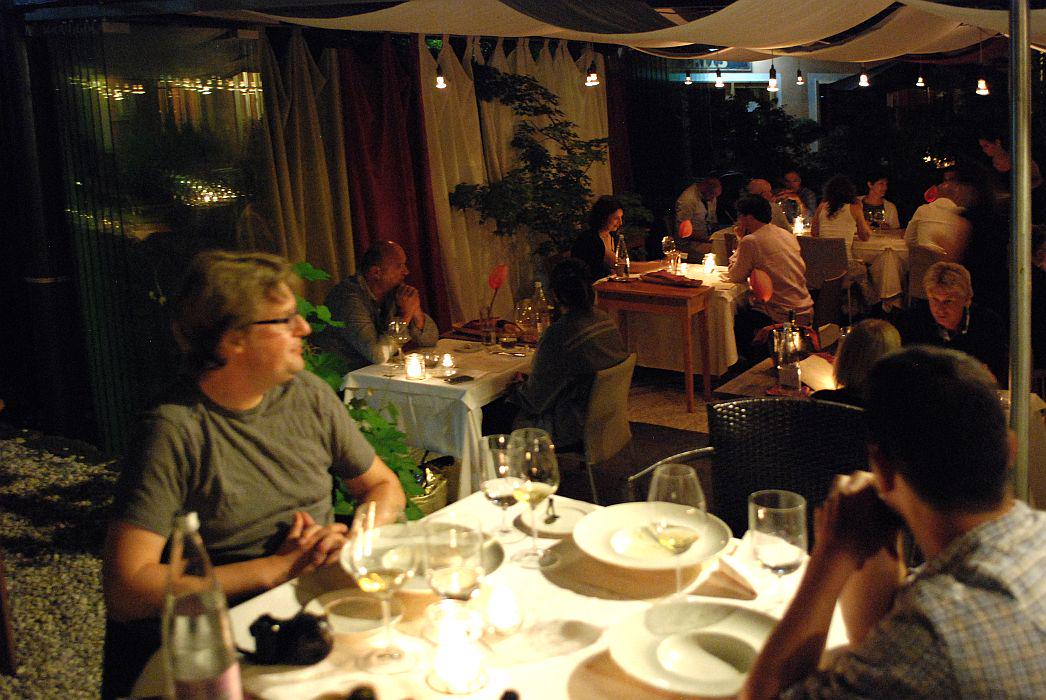
It is a hospitable country house, in which three generations live side by side. Behind the house is a large vegetable garden, while beside the house flows the Franca stream, home to a small family of trouts. The driving forces are Ana and her husband Valter. According to their management philosophy, nothing beats the local and seasonal, with a spoon full of Ana’s personality. Their cuisine is dominated by Tolmin cheeses, home-made butter and lamb and goat from the Drežnica pastures, while Valter's cellar offers Slovenian and biodynamic wines.
In pre-holiday time, we asked them what kind of food they prepare during the festive days. Traditional and related to the local environment was their unanimous answer. Slovenia's countryside, claims Ana, is much more traditional than its cities. There, regardless of what people are doing in their lives, traditional customs are kept alive within families. The customs that are passed from generation to generation are particularly strong. In this way, Ana has learnt many things from her parents and her parents-in-law. "Our family always gets together for holidays. Every woman brings along some food in order to take some burden off the lady of the house. Meat dishes and the white variety of dried cod are traditionally consumed, while meals always close with potica cake for dessert. Here, it is named 'gubanca' and resembles the potica cakes from the Nadiža valleys – an area beneath the Matajur mountain. In that area, gubanca is a common dessert, well-known throughout Italy. It is a very rich potica cake, containing a lot of filling made of walnuts and raisins. During Easter, gubanca cake is joined by dry-cured meat products, all of which have been blessed in a church. In this way, we particularly emphasize our attitude towards our guests. Easter always begins with sliced ham baked in pastry with grated apples and closes with potica cake. Virtually all of the food served to our guests during Easter is blessed."
Kobarid rolled dumplings (štrukelj)
The greatest tradition of the Kobarid area is a dish called Kobarid dumplings, known to every Kobarid family. It marks every holiday and there is no lady of the house in Kobarid who would conclude a festive meal without Kobarid rolled dumplings. "In our area, traditions are still rather strong. In this way, the environment is manifested through cuisine, through food, which is prepared in various ways. During holidays, we pay particular attention to our tradition to keep it alive and preserve it so that our guests can feel that we care about the dishes from old times. The recipe for Kobarid rolled dumplings has only been passed on through oral tradition; no written recipe for their preparation exists. Luckily, our children are taught to make Kobarid rolled dumplings at local schools, while the country women's club is reviving old culinary traditions. On Christmas day, the entire Franko family gathers at our house, while on Christmas Eve, we attend bilingual mass in a church across the border. In recent years, we have been visiting the Landerska cave near Špeter, immediately across the Italian border, where many Slovenians gather on festive evenings. According to local tradition, people treat themselves to tripe after mass. All local inns are open at midnight, serving tripe. Unfortunately, this tradition has not yet been revived in Kobarid, so people from Kobarid cross the border on this day. I think it’s a very nice custom. Two families gather for Christmas – mine and my husband's. There are 20–25 of us sitting at the table at my mother in law's place, putting tables together in all possible ways in order to make room for everybody. Holidays are meant to unite families, especially nowadays, when time is scarce. We should get together at least during the holidays, and food has always connected people. We are forced to sit together even if we don't get along and disputes are almost always resolved at the table, so food is a good way of bonding people."
Whatever they do is always based on the local environment, points out Ana. The basic ingredients they use for preparing food originate in the Posočje region. They boast a rich tradition in processing fermented cottage cheese and preserving herbs in particular ways. In this way, they create different and original basic dishes that attract visitors. They would not be considered interesting by foreigners coming from afar if they offered something global; therefore, presentation of the environment through the menu is of crucial importance, as they like to point out. The dishes are also prepared in accordance with the season. Currently, Japanese persimmon, pumpkins and chestnuts are in season. They adapt their menu to the seasons of the year. However, rolled dumplings, cottage cheese and potatoes are always available, prepared according to old recipes, as herdsmen used to prepare them. In mountain pastures, fermented cottage cheese is prepared without refrigerators. Accordingly, the fermentation process begins, which protects the cottage cheese. It is usually eaten with boiled potatoes or dressed polenta, which has always been used around here to chase hunger away. Home grown potatoes, cottage cheese, cheese, cheese soup, bišča (potato soup), poštoklja (mashed potatoes and vegetables, such as beet, string beans) and frika – a dish made of potatoes and cheese – are the most common local dishes. In the valley where Tolmin Cheese is made, herdsmen have always eaten frika – roasted sliced potato with cheese.
Keeping tradition alive
Communism dispelled traditional cuisine from inns, but luckily it has been preserved in certain households as well as on the slopes of the Matajur Mountain, where dressed polenta and wild boar are still served in local inns. The Nadiža valleys are an area populated by Slovenians with their own specific dialect and a very high level of ethnic awareness. The most well-known bilingual school is in Špeter, 10 kilometres away, where Italian parents increasingly decide to enrol their children. Luckily, the demand for traditional cuisine has returned to Kobarid in recent years. Young people are used to eating good food and drinking good wines; even the smallest pubs serve top-quality wines. Many foreign gastronomic tourists who come to Kobarid enjoy local dishes filled with tradition, along with Kobarid’s beautiful nature. Tourism is mainly managed by the local population, which has raised the town's tourist services, accommodation and cuisine to an enviable level. We have been told that even the nearby Italian town of Čedad (Cividale), which is historically much richer, is lagging behind Kobarid when it comes to tourist amenities. But we remain unpretentious, Ana assures us: if guests choose to stay in a hotel, they will always be served salad from a local garden and home-baked bread.
The Frankos also have a cheese cellar, which is probably the only Slovenian cellar where autochthonous cheeses mature at controlled temperatures and humidity. In Slovenia, we have three cheeses with a protected designation of origin: Nanoški sir (Nanos Cheese), Bovški sir (Bovec Cheese, made of 100 % sheep’s milk) and Tolminc (Tolmin Cheese). Every year, many wheels of young cheese are bought from various mountain pastures in the Tolmin area, mostly from the Sleme pasture cooperative. These cheeses are made of raw milk by using natural rennet. Therefore, the pristine nature of the Posočje region can be felt in the cheeses. One can tell by their colour in which month the cows were grazing (spring cheeses are distinctly red or orange due to the carotene contained by mountain flowers). After several years, the Frankos succeeded in maturing five-year-old Tolmin Cheese, which is perfectly complimented by Ana's jams and mostardas. Its colour is a dark hue of coffee, its flavour is distinctly spicy and its structure is completely crystallized.
Very early on, Ana and Valter Franko realised that in order to develop, one must seek knowledge abroad. This is particularly important in tourism. "We observe what Austrians and Asians are doing and we bring home what we learn during our trips. In the hospitality business, service is the most important – which means that someone must always be available for the guests who might need something. In this sense, I transfer knowledge to my employees, with whom we grew up like a family. In this way, tradition is adapting to modern times. I can see how much a family lunch or dinner means to my children. Little attentions keep us alive, such as the fact that every family around here has a stove that cooks, dries and keeps the home warm."
New Year's menu
.
By the fireplace
.
A cloud of rice
Crispy pig's ears and horse radish mayonnaise
Sandwich with home-made sausage
Tolmin Cheese crusts
Fresh cottage cheese, bread with fennel, salmon roe
Oysters and "never caviar"
.
At the table
.
Golden hands for buckwheat and corn bread, crispy breadsticks/Kobarid butter
Soča trout caviar, forest potatoes, sour cream and a scallop
Winter/peasant meringue, goose liver, an apple and red cabbage
Pasta filled with white dried cod, Squid and Tolmin Cheese matured in an earthen root cellar
Posočje grayling and chicory, kaymak
Roe deer, 2x topinambur, dried plums
Spruce marzipan, marshmallow roses, wild raspberry and lemon cream
Sweet potato, chocolate dreaming of being blond, Japanese persimmon and tangerine
.
1.1
Honey truffle, honey cake, Speculaas, fig sorbet, walnut croissants
In our area, traditions are still rather strong. In this way, the environment is manifested through cuisine, through food, which is prepared in various ways. During holidays, we pay particular attention to our tradition to keep it alive and preserve it so that our guests can feel that we care about the dishes from old times. The recipe for Kobarid rolled dumplings has only been passed on through oral tradition; no written recipe for their preparation exists. Luckily, our children are taught to make Kobarid rolled dumplings at local schools, while the country women's club is reviving old culinary traditions. On Christmas day, the entire Franko family gathers at our house, while on Christmas Eve, we attend bilingual mass in a church across the border. In recent years, we have been visiting the Landerska cave near Špeter, immediately across the Italian border, where many Slovenians gather on festive evenings. According to local tradition, people treat themselves to tripe after mass. All local inns are open at midnight, serving tripe. Unfortunately, this tradition has not yet been revived in Kobarid, so people from Kobarid cross the border on this day. I think it’s a very nice custom.
Holidays are meant to unite families, especially nowadays, when time is scarce. We should get together at least during the holidays, and food has always connected people. We are forced to sit together even if we don't get along and disputes are almost always resolved at the table, so food is a good way of bonding people.

































































